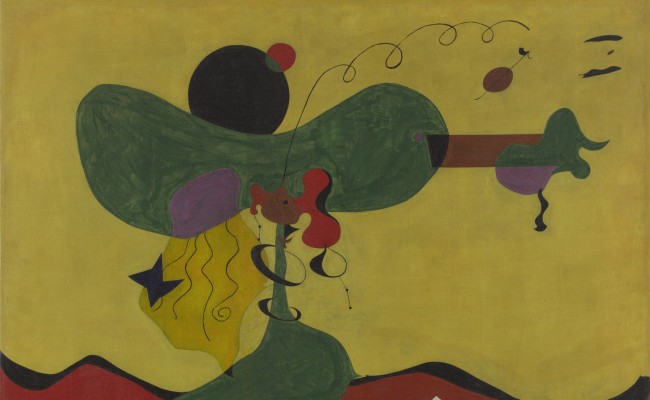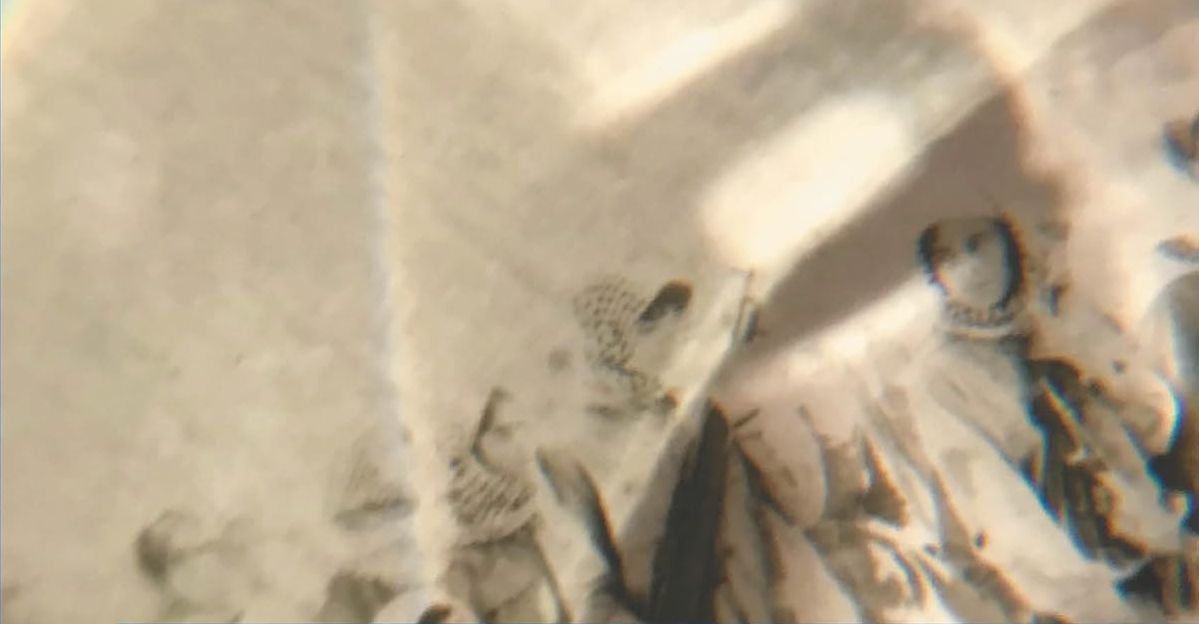After Barbara Rose, ‘ABC Art’
-2.
‘… even ruined, [it] was pure visual rhythm, was strict ritual and orderly worship diagrammed in stone.’
– Teju Cole, Blind Spot
Have you ever noticed the drip in the broad culvert that erodes the Grey Cube building near the centre of Melbourne? From afar, you might think it a leak. But actually it’s not water escaping. No, it is water deliberately fed onto a large window under the overhang at the entrance. I imagine, far from liberation, the water attains its highest calling by justifying the ‘recycled water’ signs in the glorified-pigeon-bath of the fountain and pool that divide the Grey Cube from the street like a moat. There, it jets into the air ^ floats for a second ~ then falls flaccidly back to earth _.
-1.
‘Our coincident gazes overlay the same sites over and over again, as though we were caught up in a slow-motion religious fervour.’
– Teju Cole, ‘Take a Photo Here’, New York Times
We encounter the world through such frames, and sometimes it is worth ducking under them. Between the tightly arranged order of the street – no less that St Kilda Road boulevard, whose vista guides our vision onwards from glass-steel monuments of capitalism to the light-grey stone monument to militarism – and the sudden disordered space of the gallery foyer is planted the dripping wall. Let it not dampen your spirits. There is the possibility of something new – an experience, a fleeting change in our way of seeing – under this highly ritualised passage under the arch. There is respite from ritual anaesthesia and habit, and also new fantasies within to which we might succumb: Magnificent Modernism beckons.
0.
‘… where we should have a sense of the inherent logic of modernism but are faced with a jumble of disconnected styles, and the complete shapelessness at the end of the exhibition.’
– Anon
A contemporary review captures the flavour of the times, might be something future historians say of this exhibition. The fear in this one – it remains nameless, because, really, who cares – is that we the viewers should receive the message of the necessary supremacy of Western Modernist Art. The fear is that art might make us think – well anything really! It asks how the ordinary viewer is to make any link between [the paintings], or understand what motivates their entirely different styles, is a mystery. I have no answer; the question is already misguided. We want to be unguided, encounter the objects without so much baggage. Especially when it comes to ‘exhibitions’ like this. The NAMES literally droop with institutional prestige, with the former threatening to overshadow the latter. Reputations – buildings, white or grey – are immense. Let us puncture them and watch the objects float free as though they could just be sensory experiences with which to make, well, anything of.
1.
‘… there is no precise reason for certain inclusions and exclusions except personal prejudice and an idiosyncratic method of categorisation that would make little sense on anyone else’s grounds.’
– Lucy Lippard, ‘Preface’, Six Years
… is almost a description of the curatorship here. They got what they could from the bigger power, like Australia’s military relationship with the United States. The analogy is apt – MoMA has occupied a space in the NGV like the armed forces of the USA occupy other countries: totalising, unreflective abandon, glorifying in long-lost prestige then, in the aftermath of failure and destruction, trying to convince itself that the occupied population will come around to their way of thinking (*hearts and minds). Think I’m being over-the-top? Walter Benjamin, mystic saint-among-critics, broaches warfare and Fascism in his essay ‘The Work of Art in the Age of Mechanical Reproduction’. He also writes, mechanical reproduction emancipates the work of art from its parasitical dependence on ritual.
2.
‘I took a trip to see the beautiful things… Translate that for me. I forgot my phrasebook… I don’t want that kind of revelation… This staunchless wound, the great longing for another place.’
– Susan Sontag, ‘Unguided Tour’ I, etcetera
We’ve snuck in under the arch, lining up for our ticket, but we haven’t escaped unmarked. As much as the space is structured, tinted by the stained ceiling, so too our thoughts measured. The key, sometimes, is to know the measure and let it lapse; also to know at what time this is key. I want us to embrace being unguided through these spaces and events. It’s hard to practice, and rarely achieved but imagine being disinterested in the message of the painting and yet finding it irreducibly interesting. Imagine focusing on the quality of experience, then sharing it and seeing it shared; a kind of communal luxury as Kristin Ross writes. But I am moderated by Christa Wolf’s phrase in Cassandra: As if we could be at the same time completely free and yet measured.
3.
‘The more you try to find the subject in the paintings, the fuzzier you get in the head, and this is the way the communists want you to feel for when you are fuzzy in the head you are ready for infiltration.’
– Quoted in Harry Blutstein, Cold War Games
These objects – the ‘art’ ones – are here to help us. Precisely not by being or insisting on their ‘Art(ful)ness’ but by welcoming images, objects and performances that seemed most opposed to the idea of fine art, as Jacques Rancière opens Aisthesis. They’re here to stir up the fuzziness that means we no longer prioritise one material over another, one human over another, any thing over anything else. In this fuzz, anything at all can enter meaningfully into our experience. Sense is redistributed. I want to follow, in my little unguided tour, the way in which modernism’s story of perfectible abstraction is usurped by the insistence of the human figure, in the midst of it all.
4.
‘The symbols are all completely clear and they are all translatable.’
– Troels Anderson in Blockade
The exhibition’s chronological progression disseminates if we experience its visual rhymes and thematic chimes. Cézanne’s apples are both a gift form the world of measures and like a postcard of itself, in the words of Nadia Tuéni and Teju Cole respectively. Their luminosity striking in the midst of a bared canvas, like I know it’s paint but still I salivate. Too obvious? Yes: rhyme is generated by the gradual sense of something shared by diverse objects, freely arranged. Let me draw a thread from Gunta Stöltl’s wall hanging (1924) to Anni Albers’ free-hanging room dividers (c. 1949). We witness not only a delicate but unglamorous sensitivity to materials in past-war scarcity and vertiginous modernity, we also see the dream of a unity of life and art literally move with Albers from Bauhaus to Black Mountain, Germany to America.
These echoes shimmer onward to the final room where El Anatsui’s striking metallic ‘Bleeding Takari II’ (2007) and the National Union of Saharwi Women’s woven panel (2016) artfully combine found objects and craft. They remain true to Cézanne’s lingering promise at the beginning to ‘astonish Paris’ with apples but re-framed over and over against the imminent collapse into the art-market’s ironic appetite for astonishment.
5.
‘I can’t accept physical assault and complete destruction of pathetic human activity. No work of art created with a contempt for ordinary humanity and without respect for the common element of human experience can be great.’
– Danny Katz, testimony to public hearing quoted in Anna C Chave, Minimalism and the Rhetoric of Power
The man, Katz, knows what he wants. But not everyone is so sure about ordinary humanity. While the stern Suprematists and energetically goose-stepping Futurists seemed intent on paring down human imperfection, the sunnier Surrealists squished and stretched its proportions to the limits of sense and recognition. Such tired generalisations are hard to avoid in such an exhibition. Kazimir Malevich’s stale flight from the ballast of the objective world squats across from Joan Miró’s ‘Portrait of Mistress Mills in 1750’ (1929) that takes pleasure in a globular flexibility with the painted human form of history. Silhouettes skip across history in Kara Walker’s ‘Gone’ (1994). Small feet poke out from under the hem of a colonial-style dress. They reach for a ground of ritual exclusion, morph and grow appendages like wounds of monstrous crimes made newly visible, then procreate and multiply. Not to be forgotten, and to be found living new life.
Martha Rosler’s ‘Semiotics of the Kitchen’ (1975) predates The Katering Show by decades but presages its knife-like satirical edge. Her movements begin by exaggerating women’s domestic ritual and habit then caricature them with the kind of violence one imagines invisibly seething throughout the film of the same year, Chantal Akerman’s Jeanne Dielman, 23 quai du Commerce 1080 Bruxelles. Finally, Christian Marclay’s ‘Telephones’ (1995) weaves wires through the gesture of telephonic communication. Most hilarious, to me, is the attempt to be urgent on a rotary dial, the action ending up just more vigorous than the technology affords. But there’s a sinister undertow, as in Tracey Moffat’s ‘Love’ (2003), when mechanical objects not reply (‘Hello?… Hello?’), or faces contort in joy or sadness ripped from their narrative context.
6.
‘An artist might advance specifically to get lost, and to intoxicate [themselves] in dizzying syntaxes, seeking odd intersections of meaning, strange corridors of history, unexpected echoes, unknown humours, or voids of knowledge … but this quest is risky, full of bottomless fictions … at the end, if there is an end, are perhaps only meaningless reverberations …’
– Robert Smithson, ‘A Museum of Language in the Vicinity of Art’
Then, unexpectedly, objects begin to take on human shape and how you respond depends on whether you think it’s stealing or sharing. Not neo-classical forms of burnished marble muscle. Instead objects like the one you might read this on: flat surfaces, jagged arrangements of steel. Hard, ungiving material made to unwind some secret longing of the human, like Louise Bourgeois’ recast ‘Quarnantania, III’ (1949-50) whose fin-like head swims menacingly through the space. At the other end of the room, suspended, Alexander Calder’s ‘Snow flurry, I’ (1948) launches as delightfully as wingéd Icarus into the air, then, as it rotates to show you its other face, could be his drowned skeleton hanging together by black sinew. Constantin Brancusi’s ‘The newborn’ (1920) seems to spherically ponder how little you need to do to a round object in order to make it worth cuddling. Then, towards the close, ‘Black newborn’ (1994) arrives from Sherrie Levine. Its imitative cry re-evokes the constant bizarreness of infants, our endless fascination with them, and folds this into a reflective black glass.
7.
‘But objects of art [do] not merely interest and absorb, they move us; we are not merely involved with them, but concerned with them, and care about them; we treat them in special ways, invest them with a value which normal people otherwise reserve only for other people – and with the same kind of scorn and outrage. They mean something to us, not just the way statements do, but the way people do.’
– Stanley Cavell, ‘Music Discomposed’, Must We Mean What We Say?
We might see ourselves look back – I certainly did – from Meret Oppenheim’s exquisite and quizzical ‘Red head, blue body’ (1936). Perhaps if anything stuck with me, it was the feeling of being looked at by that single eye. It has morphed in my imagination, but when I return to it, I see again what I can barely describe: some face, as infinitely variable and expressive as a human face, in the red circle, held together with such fragile tenderness by those Barbara Hepworth-esque strings; that accommodating stretch of arm to the left, as though we could be held and comforted by a liquid form on a two-dimensional plane. I stare back; it stares back. Neither of us blinks; it cannot, I dare not, then must, then do…
8.
‘How do you like what you have. This is a question that anybody can ask anybody. Ask it.’
– Gertrude Stein ‘Lectures in America’
I blink because someone sneezes behind me, coughs, then bumps me as they reach for their tissue. Their eyes graze the canvas as they stand up, they chuckle, then move on. Anybody can do this. Anyone can turn around and complain, but as Walter Benjamin reminds us, The mass is a matrix from which all traditional behaviour toward works of art issues today in a new form. We’re far better paying attention to how these exhibition crowds change the experience of art. They might, for instance, take art out of the ritual quietness of contemplation so characteristic of regulated behaviour in galleries. Sure, you’ll have to contend with a new kind of absorption in the experience, but the chatter is like a wave you can ride, duck, or meet head-on. Robert Rauschenberg didn’t drown, he made the ‘Surface’ series from Currents (1970), dipping into news not to succumb to its noxious allure, but to return like Aeneas from Hades itself to share + communicate my response to + concern with our graves times + place. Gerhard Richter’s more sombre ‘Tote’ [Dead] (1963) brings back a piece of Hell, brushed almost beyond the knowledge that it’s just a newspaper fragment as well. The art around is documenting and recording the same world that comes to see it, only the question is whether something happens between entering and entry. Here, say, I am trying to be unguided.
9.
‘… since what I think I am, unlike an animal’s love and undying loyalty, is impossible to display. But then this is a notion, disposition, habit of mind, or humour I’m working to disinhabit or more completely inhabit, an understanding of which I’d like to accomplish here, to discover its validity or lack, and in the room that is not for sleeping, where I light fires and watch them, my ideas and objects lie strewn over the floor, and I mean to do something with them in this regard.’
– Lynne Tillman, American Genius, A Comedy
Tight people say things are looser than they once were. Opinions float in and out of screens, seemingly detached from sense (bordering on nonsense, and immaterial). Sometimes, the absolute openness to anything at all can feel like a kind of lost-ness. Then we come down again, and see what’s around. Camille Henrot, with ‘Grosse fatigue’ (2013), tugs on the string of the helium balloon that just wants to float off and pollute some ocean somewhere unseen. Given a kind of playground at the Smithsonian, Henrot pulls at its cupboards and unwraps its secreted knowledges until they pour out onto a computer screen. Here the configurations of knowledge begin to soak in the poetic narration and slip about, congeal then lose structural integrity as the clicking mouse chases their images into a global fabric, like the room it inhabits, of thought, feeling and experience. The online search returns results but sometimes no object. Henrot shows how objects still lace our world, and what pleasure is to be found in them. Hands flit across the screen, as Dziga Vertov imagined they might in his planned film about 127 hand gestures, from the most trivial to the most meaningful, as Rancière writes.
Vertov speaks of his films, one of which, The man with the movie camera (1929) is in the exhibition, as speaking in the language of the ‘Communist deciphering of the seen world.’ In this language, things share meaningful status with people, and with space and time as perceptible facts, without thereby losing each of their specific textures and demands on us. I want to conclude with a particularly unguiding sentence from Susan Howe’s reflection on Vertov, ‘Sorting Facts’ in The Quarry. She writes, and please pay her the poetic slack she earns again and again:
10.
‘Steerage toward redemptive bourgeois historical resolution what music to windward probably unaware of rocks the motion of waves the swelling fold how quickly the sail becomes a contorted mass of fabric.’
Image: crop of Joan Miró’s ‘Portrait of Mistress Mills in 1750’



